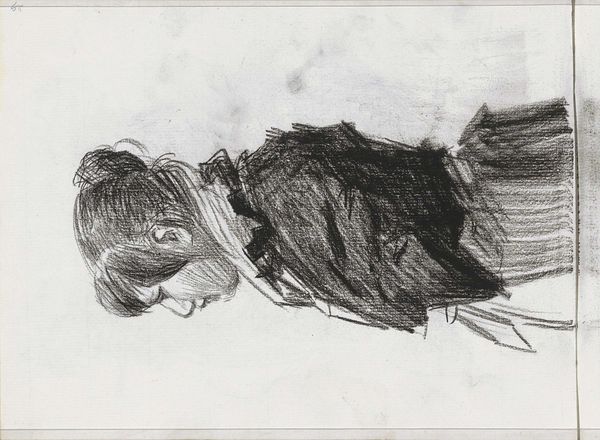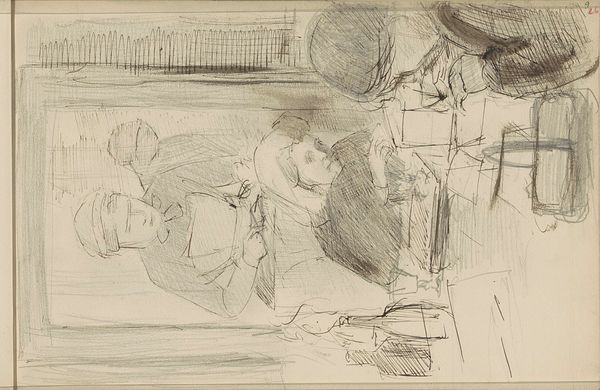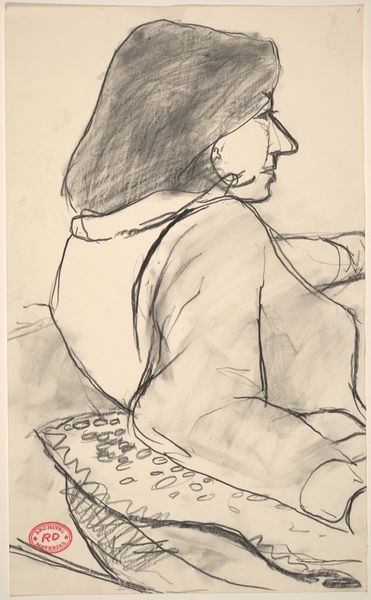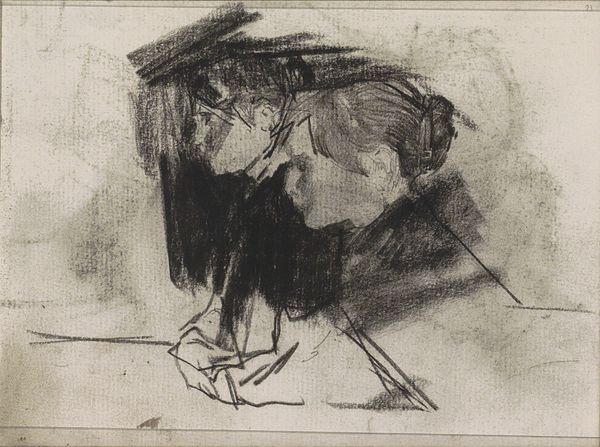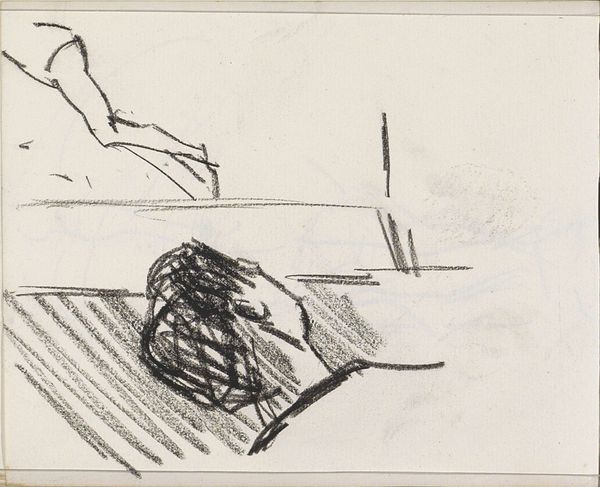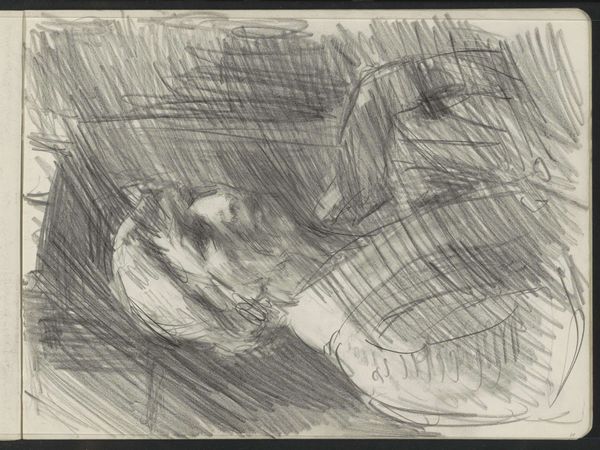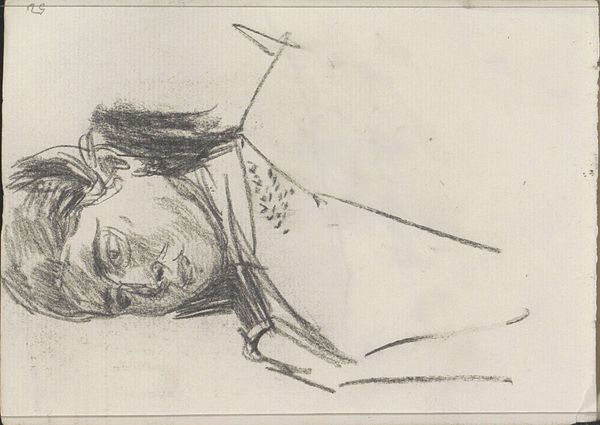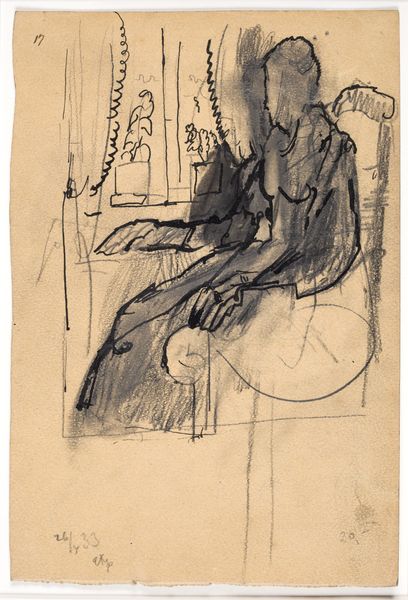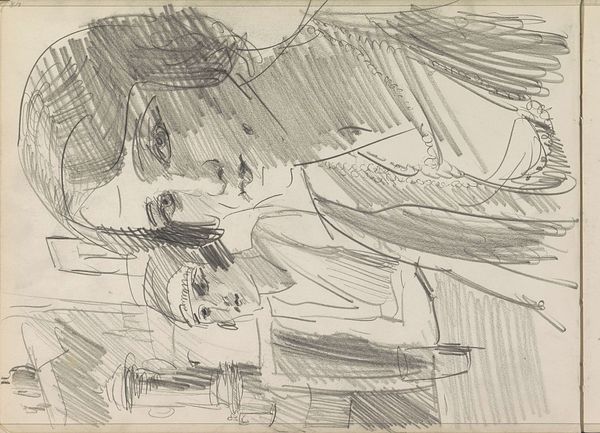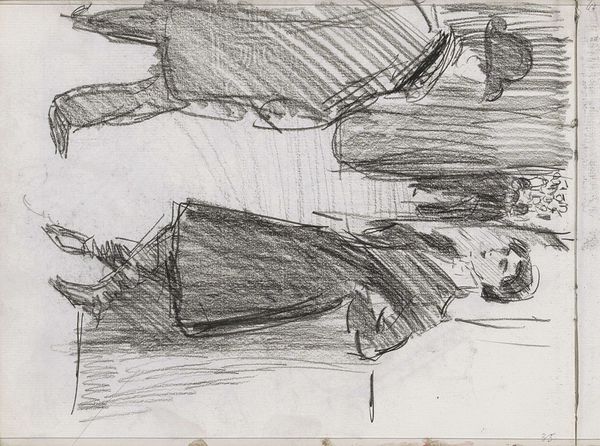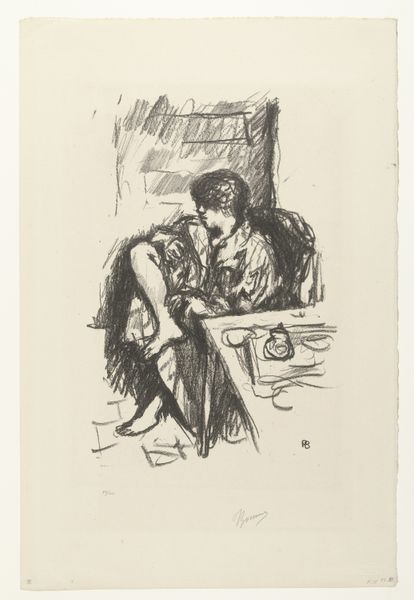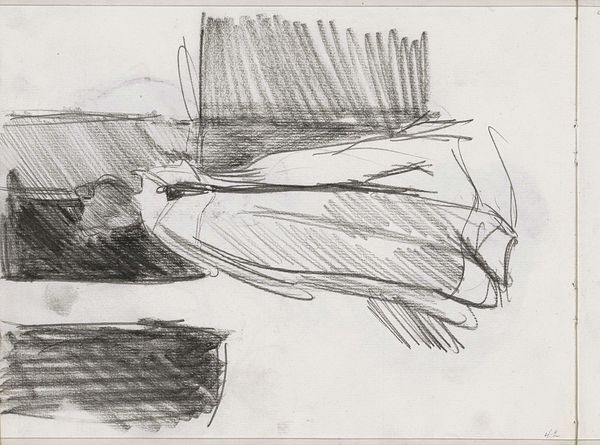
drawing, ink
#
portrait
#
drawing
#
ink drawing
#
pencil sketch
#
ink
#
pencil drawing
#
genre-painting
#
modernism
Dimensions: sheet: 21.59 × 28.42 cm (8 1/2 × 11 3/16 in.)
Copyright: National Gallery of Art: CC0 1.0
Editor: So, this is Albert Serwazi's "Study for 'Model Resting'" from 1938, an ink and pencil drawing. It’s interesting how the strong, dark inks define the shapes in the image so directly. What's your take on the materials and how they interact here? Curator: I think it’s vital to consider this drawing through a material lens, by analyzing the choices and processes behind it. Notice the contrast between the quick, almost industrial feel of the ink strokes, and the more delicate, intimate marks of the pencil. Consider the type of paper, likely cheap newsprint considering the context, forcing the artist to make deliberate, impactful marks. What does that say about accessibility, labor, and artistic creation? Editor: That’s a compelling idea. So the specific materials used influence our interpretation? Is the 'study' label highlighting something? Curator: Absolutely. 'Study' suggests preparation, a working-through. These marks show the artist actively wrestling with the image. How much was the model paid, and under what social conditions did both labor, the making of art, and the rest become possible? Notice how he rapidly built tone. Consider also, the relationship between ‘high art’ and what many dismiss as mere 'draftsmanship'. It challenges us to confront hierarchies within artistic labor and the marketplace. Editor: That completely reframes the way I see the drawing. It becomes more about the process of its making and its place in the artistic world. The sketch stop being about the apparent image and becomes all about the act of drawing and sketching itself. Curator: Exactly! By focusing on the materials and techniques used, as well as considering social context, we shift the focus away from just the finished object, the aesthetic experience itself, and towards the human labor and resources necessary to create it. Editor: That perspective really illuminates the choices that Serwazi made and broadens my appreciation of it as something produced through different ways of accessing and processing materials and art-making labor itself. Thank you!
Comments
No comments
Be the first to comment and join the conversation on the ultimate creative platform.
